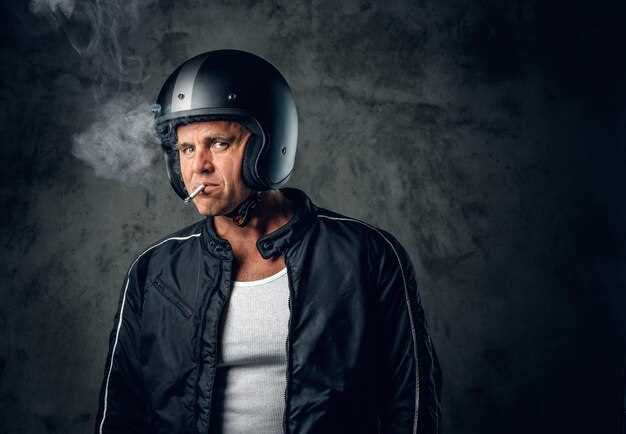

The world of motorcycling is a rich tapestry woven from the stories and achievements of extraordinary individuals. These legendary motorcyclists have not only pushed the limits of speed and endurance but have also profoundly influenced the culture and evolution of motorcycles as we know them today. From the iconic racers of the early 20th century to the fearless adventurers of contemporary times, their contributions have left an indelible mark on the riding community.
Each of these figures has transcended the mere act of riding; they have become symbols of freedom, rebellion, and innovation. Their journeys–marked by both triumphs and trials–have inspired countless individuals to take to the open road. In this article, we will explore the lives and legacies of some of the most influential motorcyclists in history, examining how their pioneering spirit and relentless pursuit of excellence have shaped the sport and community we cherish today.
Through the lens of their experiences, we will shed light on the impact these riders have had on technology, safety, and camaraderie within the motorcycling world. From groundbreaking innovations in motorcycle design to epic cross-country journeys that captured the imagination of many, these legends remind us that riding is more than just a pastime; it is a way of life that embodies adventure, challenge, and connection.
The Pioneering Techniques of Early Motorcycle Innovators

The development of motorcycles owes much to the innovative techniques introduced by early pioneers, who laid the foundation for modern riding. Among these innovators, figures like Gottlieb Daimler and Wilhelm Maybach made significant strides by integrating combustion engines into two-wheeled vehicles. Their invention, the Reitwagen, released in 1885, marked the beginning of a new era in personal transportation.
Another key figure, Henry H. McCarthy, contributed by enhancing the designs of bicycle frames to accommodate larger engines. His understanding of balance and weight distribution allowed for more stable rides, a crucial advancement for early motorcyclists navigating unpaved roads. This adaptation not only improved stability but also influenced the ergonomic design of future models.
The introduction of the chain drive system by companies such as Indian and Harley-Davidson further revolutionized motorcycle dynamics. This innovative mechanism transmitted power from the engine to the rear wheel more effectively than previous belt systems. As a result, riders could experience enhanced acceleration and speed, paving the way for racing competitions that showcased motorcycle performance.
Moreover, early motorcycle innovators explored the concept of suspension systems. The pioneering work by designers like William Henderson led to the development of improved shock absorbers, which significantly enhanced riding comfort over rough terrain. This focus on rider experience helped cultivate a loyal following among enthusiasts and ultimately spurred the growth of motorcycle culture.
Safety was another crucial domain where early pioneers made their mark. The introduction of braking systems evolved from basic designs to more complex mechanisms. For instance, the transition from spoon brakes to modern drum brakes provided better stopping power and control, which was essential for the burgeoning motorcycle community.
In summary, the pioneering techniques of early motorcycle innovators revolved around advancements in engine design, frame construction, drive systems, suspension, and braking mechanisms. Their relentless pursuit of improvement not only shaped the riding experience of their time but also laid the groundwork for the sophisticated motorcycles we see today.
Iconic Races and Their Impact on Motorcycle Culture

The world of motorcycle racing is filled with legendary events that have not only showcased the skills of exceptional riders but also significantly shaped motorcycle culture. Iconic races such as the Isle of Man TT, MotoGP, and the Dakar Rally stand out as milestones in the history of motorsports, influencing everything from motorcycle design to riding techniques.
The Isle of Man TT, held annually on the Snaefell Mountain Course, is perhaps the most famous motorcycle race. Established in 1907, this grueling event attracts top riders and enthusiasts from around the globe. The challenging course, with its unpredictable weather and treacherous turns, has become a proving ground for both amateur and professional racers. The legacy of the TT raises awareness about safety and innovation in motorcycle technology, as manufacturers continuously strive to improve performance and enhance rider protection.
MotoGP, the pinnacle of motorcycle road racing, has had a profound influence on motorcycle culture since its inception in the 1940s. This championship features the fastest bikes and the most skilled riders, creating a spectacle that captivates millions. The technological advancements showcased in MotoGP, including aerodynamics and electronic enhancements, have trickled down to consumer motorcycles, ultimately changing the way bikes are made and perceived. The media presence and global following of MotoGP promote motorcycling as an exhilarating lifestyle, encouraging a new generation of riders and fans.
The Dakar Rally, a brutal off-road endurance race, has also left a significant mark on motorcycle culture. Originating in 1978, this rally showcases not only speed but also the resilience and skill of the riders facing harsh terrains. The spirit of adventure promoted by the Dakar has led to a rise in off-road riding and adventure touring, influencing manufacturers to create more versatile and durable motorcycles designed for both paved roads and rugged landscapes. The camaraderie among participants fosters a sense of community and inspires countless enthusiasts to embrace the thrill of exploration.
These iconic races have cultivated a rich culture surrounding motorcycling, emphasizing values such as courage, innovation, and community. They continue to inspire riders and manufacturers alike, ensuring that the passion for motorcycles endures across generations. The impact of these events reaches far beyond the racetracks, shaping perceptions and driving advancements in the world of motorcycling.
Modern Legends: How Today’s Riders are Redefining the Sport
In the ever-evolving world of motorcycling, today’s riders are pushing boundaries, setting new standards, and changing perceptions of what it means to be a motorcyclist. This new wave of talent and innovation has not only reinforced the sport’s relevance but has also expanded its appeal to a broader audience.
One significant aspect of this transformation is the rise of diverse riding styles and cultures. Modern riders are not confined to traditional genres; they explore everything from adventure touring to track racing, creating a vibrant tapestry of riding experiences. With the expansion of motorcycle types, including electric models, riders are embracing sustainability while still capturing the thrill of the ride.
The influence of technology cannot be overstated. Today’s riders leverage advanced gear, smart helmets, and connected bikes to enhance safety and performance. The integration of apps provides real-time data on route optimization, weather conditions, and even bike diagnostics, allowing for a more informed and enjoyable riding experience.
Social media platforms have transformed how riders connect and share their journeys. Modern legends utilize these channels not only to showcase their skills but also to foster communities that celebrate diversity and inclusivity within the sport. Influencers and content creators are making motorcycling accessible to younger generations, inspiring them to take up riding with a sense of camaraderie.
Furthermore, today’s riders advocate for change within the industry. They are vocal about issues such as safety standards, representation, and the environmental impact of motorcycling. This activism breeds a new kind of rider–one who is socially conscious and aims to foster a positive image of the sport, ensuring its growth and sustainability for future generations.
Finally, personalization has become a hallmark of modern motorcycling. Today’s riders take pride in customizing their motorcycles, showcasing individuality and artistic expression. This trend reflects a deeper connection to their machines, as each customization tells a unique story and enhances the emotional bond between rider and bike.
In summary, the modern legends of motorcycling are reshaping the sport through diversity, technology, community engagement, activism, and personalization. As they continue to break down barriers and foster a more inclusive environment, they ensure that the thrill of motorcycling remains alive and well in an ever-changing world.






